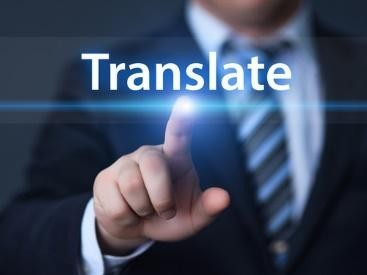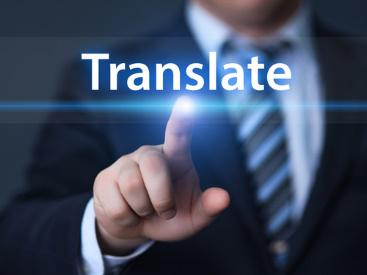Last updated on March 18, 2017
Although the terms translation and localization are often used interchangeably, they are notably different. The terms however share similarities. Understanding their differences is however more important since it allows online marketers (the people who use these terms mostly) to benefit from the knowledge of the industries as well as help brands globalize more effectively and profitably. To help you get started in understanding the difference, below are some simple definitions.
Shutterstock.com/Alexander Supertramp
Definition: Translation and Localization
Translation refers to the process of changing one language into a different language by substituting words. From an online marketing perspective, translation refers to the process of changing an original language version of website content i.e. multimedia, text, eBooks etc. into a different language (the target language) by substituting words (from one language to another in context).
Localization is far more specialized that translation since it involves adapting content for local or regional consumption. In simple terms, localization goes beyond translation by modifying the source language among other website elements to make the content appealing to the cultural preferences of the target audience in their own language.
Translation vs. Localization
From the above definitions, you may be wondering which one is better i.e. do you just bridge language barriers by translation your site content word-for-word or should you go further and adapt as well as refine the message? To answer this question, let’s begin by looking at the weaknesses of translation. First and foremost, translation brings forth the problems of intention and clarity since the source language is changed on a word-to-word basis, resulting in machine translations which are primitive and don’t follow professional editing cycles. In case translations are done by a professional linguist, the translations may incorporate professional editing cycles, but lack the required level of cultural/technical nuance necessary for resonating with a certain audience/locale.
To offer a high quality customer experience, everything shouldn’t stop with translation. The content must be localized to serve all types of global audiences. Global websites can’t rely on language translations only. To offer a high quality customer experience, top global brands utilize localization to ensure online content is regionally specific. Website translation bridge language barriers only. Website localization goes a step further and refines messages as well as curates global brands to meet the functional, cultural and language expectations of target markets.
Expectations
Localization considers the fact that expectations vary from one region to another which is entirely true. Different regions have different cultural and functional expectations. Examples of cultural expectations in regards to website content include; societal codes (i.e. etiquette, humor, myths, symbols, rituals) and societal values, power relationships, beliefs. Cultural expectations also revolve around; images, graphics, icons, colors, shapes, styles and sizes.
Examples of functional expectation in content include; measurements, weights, geographical references, date and time formats, contact information and telephone numbers. Product descriptions and reviews are also good examples of functional expectations in website content. Although translation stops after word-to-word changes, localization may go as far as recreating advertising campaign messages to maximize on cultural appeal as well as avoid potentially offensive or embarrassing communications.
Translation and Localization by Content Types
Translation and localization differ on a tactical basis. While translation may be perfect for some web content types in some markets, localization is perfect for adapting highly emotive and creative marketing content to make it resonate perfectly across locales. Websites contain several content types from legal and technical content to user generates forum content and marketing copy content. Considering the audience, the content’s nature and intent first is the best way to determine which method will work best. To ensure you make a wise decision, it’s advisable to consult an experienced language service provider.
Click Here if you’re looking for a professional localization company.















A good translation will always include elements of localization.